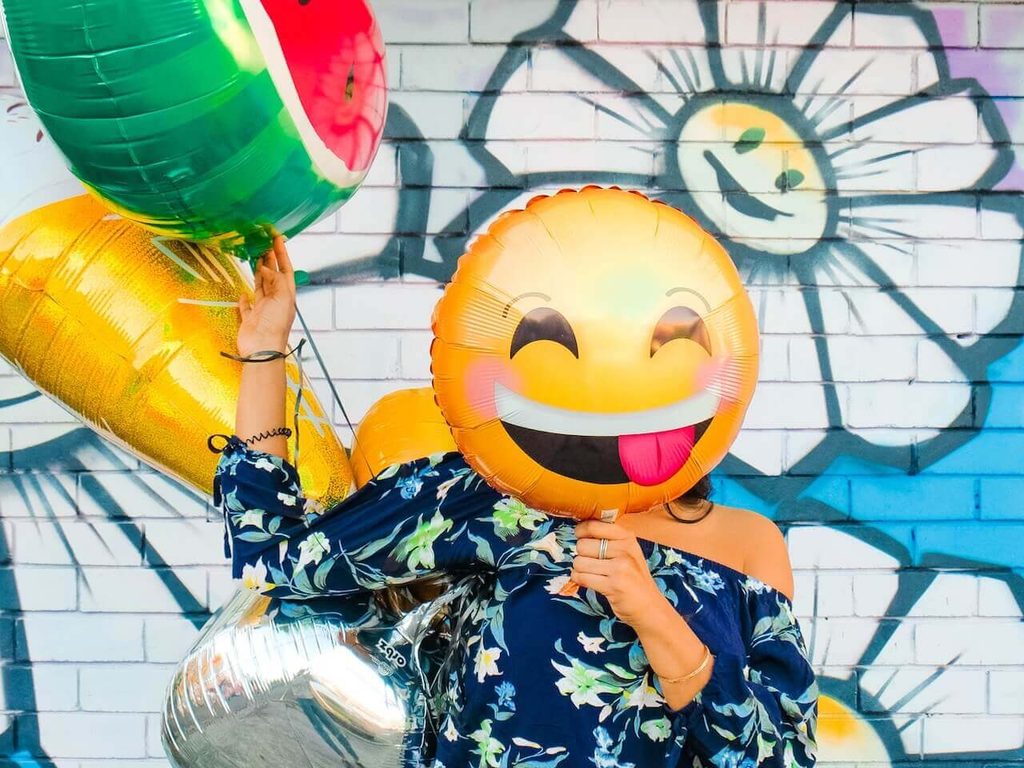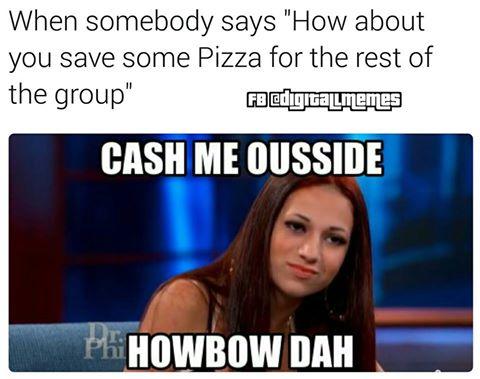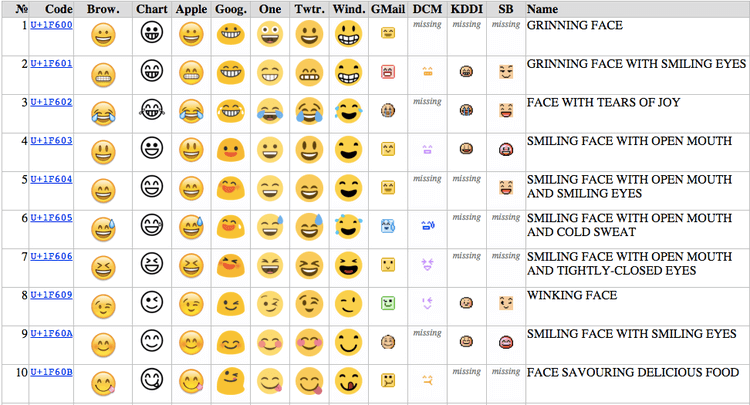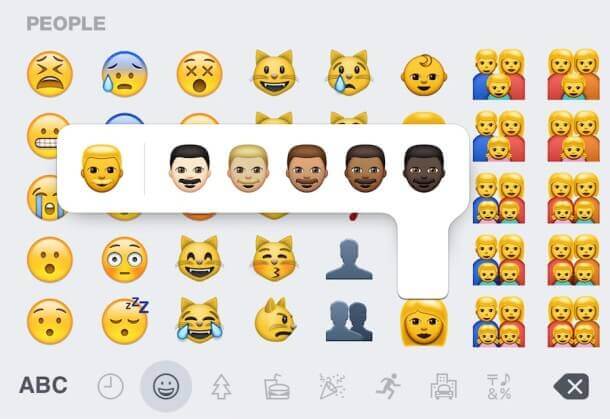Young adults often use words that are incomprehensible to everyone who’s not in their age group. With so many peculiar words in circulation, it’s hard to understand what younger generations are saying and meaning when they communicate on social media.
That being said, at one time or another, you probably also used terms that were confusing to older generations. Each decade has new slang words that are generally most understood by younger generations. Slag is commonly a result of the attitudes and thoughts of the sub-culture that uses them most often, which is why they’re always changing and evolving.
If trying to keep up with the changing language of the younger generation isn’t enough, millennials have thrown something new into the mix, the emoji.
Shortly after the emoji’s invention in the late ’90s, they quickly grew in popularity. The little icons are now a mainstay of “What the Kids are Saying” on social media.
Understanding the Creators
To understand slang, you need to learn about the group that’s creating and using it in their daily vernacular. Millennials are a group of people born between 1980 and 2000.
In total, about 92 million Americans fall into this category.
The millennial generation is very different than their predecessors. They’re less interested in owning homes, televisions and cars. They’re more interested in health, inexpensive goods and meaningful work.
Additionally, they’re very different than other groups when it comes to connection. Although they can be reluctant to interact with others in-person, they’re more connected to the world around them than any other generation.
This age group grew up with access to the Internet, and they’ve only become more connected with the aid of smartphones. Millennials are able to stay in touch with others from around the globe through social media. Many of them even use their social channels to access important worldwide news.
From this unique background, terms like “woke” have arisen. To younger generations, woke isn’t simply the past tense form of “wake.” To “be woke” means to know what’s going on around the world, specifically in regards to racism and other social injustices.
Popular Words and Phrases
Have you ever tried to talk to a younger person, only to realize he or she was distracted by a computer or phone? If so, you’ve experienced the slang term “phubbing,” which is when you try to talk to a person but he or she is distracted by technology.
Another term that’s commonly used is “TBH,” which is an acronym for “to be honest.” This acronym can accompany a variety of sentiments, from jokes to more sincere comments.
“It’s lit” is yet another expression that you might see on social media, which means that something is wonderful, fun or cool. For example, you may ask someone how their Friday night was, and if they say, “it was lit,” you can assume they had a really enjoyable time.
Often, the slang of the younger generation is designed to be short and simple. It’s not uncommon for someone to simply type “V” instead of spelling out “very.”
In direct contrast to shortening words, specific phrases, even if they’re long, can become ingrained in the slang lexicon, like “Cash me outside howbow dah.”
This phrase originally came from a woman on Dr. Phil, but it’s been reappropriated to mean that you’d like to meet with to someone to resolve an issue.
Emoji History
Shigetaka Kurita, a Japanese businessman, is known as the father of the emoji by many.
In the 1990s, he was under a lot of pressure to support Japanese phone users’ obsessions with images. Shigetaka’s solution to this issue was the emoji, which he designed himself after big tech companies like Panasonic and Sharp shut down his idea.
Once his designs were finished, large mobile companies started to listen to his idea. Eventually, many of them took his emoji designs and put them on their devices.
After the emoji took off in Japan, Apple recognized an opportunity.
They included emojis on their first iPhone that was released in 2007. Since this time, Americans have certainly caught up to Japanese users, and emojis are now second nature to many people in the United States.
Then, there was a big issue … Emojis didn’t cross devices well. When iPhone users would send an emoji to someone with an Android, the image wouldn’t show up or would come across as a totally different emoji.
So, the industry got to work on The Unicorn Standard, which sought to ensure the consistent handling and encoding of images across various writing systems.
In other words, mobile companies wanted to ensure that if you sent a photo of a rocket ship, the person who received it, even if they had a totally different device, would also see a photo of a rocket ship.
Popular Emojis
According to Apple, there are 10 top emojis on iPhones in America.
Since all of the emojis on this list are faces, they’re pretty straightforward, as they carry the same meaning as they would if a human made the face.
What’s harder to understand, though, is non-face emojis.
One example of this is the shooting or swopping star emoji, which often means dizziness. Another important thing to know is that if an emoji looks like a particular part of a human body, that’s probably what it’s used to mean.
Seriously, the peach emoji is generally used to represent a person’s backside.
So, as a general rule of thumb, if you don’t know what an emoji means, you probably don’t want to use it without figuring out how others will take it first.
Luckily, if you use Google, you can generally type in “[The Emoji You Want To Use] meaning,” and its meanings and uses will come up.
How to use Emojis
If you have an iPhone, iPad or iPod touch, you should have an emoji keyboard built into your device. To add an emoji, tap the text field followed by the “smile” or “world” symbol.
Once you do this, you can navigate through the emoji menu by using the gray icons at the bottom of the keyboard. As soon as you’ve decided on the emoji you want to use, you can see if it has any variants by tapping and holding your selected emoji.
After you’ve found the perfect emoji, you can tap on it to add it to your text field.
Another option iPhone users have is to replace words in their texts with emojis.
To do this, open “Messages” and create a new message. After you’ve written your message, tap the “smile” or “word” icon on your keyboard. Then, some of the words in your text should turn orange. When a word is in orange, you can tap on it to replace it with an emoji.
After you’ve imputed your desired emojis, you can send the message. Another quick way to use emojis is with predictive text, which helps you write and complete entire text messages.
Android users can also use emojis, but they often have to first activate their emoji keyboards.
To install, open your “Settings” menu, go to “Language and Input” and make sure “iWNN IME Emoji Input” is checked. Another option is to go to your “Settings” menu, tap on “Language and Input,” go to “Android Keyboard” or “Google Keyboard, click on “Settings,” tap “Add-on Dictionaries” and then hit “Emoji for English Words.”
Once the emoji keyboard is installed, emojis should pop up when you type applicable words.
You can also choose to add your own emojis from the emoji keyboard.
A Place for Slang and Emojis
25 percent of Americans use emojis in communications at work, hinting at the fact that their use is still limited. You might see millennials use a lot of emojis on social media, but chances are they’re not doing the same thing at work.
This will be an important thing to keep in mind as you learn more about emojis. If you start to use emojis, it’s key to know that they’re designed for casual conversations, not more serious pieces of writing.
Here, the old saying “A picture is worth a thousand words” holds true. As such, there’s a lot of ways to interpret an emoji, so when the communication is really important, it’s probably better to use concise words and stay away from symbols.
The Future of Slang and Emojis
Although slang isn’t new, it is something that constantly evolves.
For older generations, radio, televisions and telephones greatly changed the lexicon. Currently, the Internet is causing language trends to come and go quickly. Since the internet moves faster than many other forms of technology, the younger generation is creating, adoption and ceasing to use more words than arguably ever before.
Similarly, since emojis are a pretty new phenomenon, they’ll likely change dramatically in the next few years. It’s hard to know what the future looks like for emojis, though, as they’re a relatively unparalleled advancement in communication.
Understanding the slang and emojis of younger generations can be frustrating and confusing, but if you want to use social media, it’s close to a necessity.
When you run across a word or symbol you don’t recognize, try to understand it in the context of the sentence and see what it might mean. If the purpose is still unclear, look it up online.
Luckily, nearly all of the emoji meanings and slang definitions can be found on the internet.




